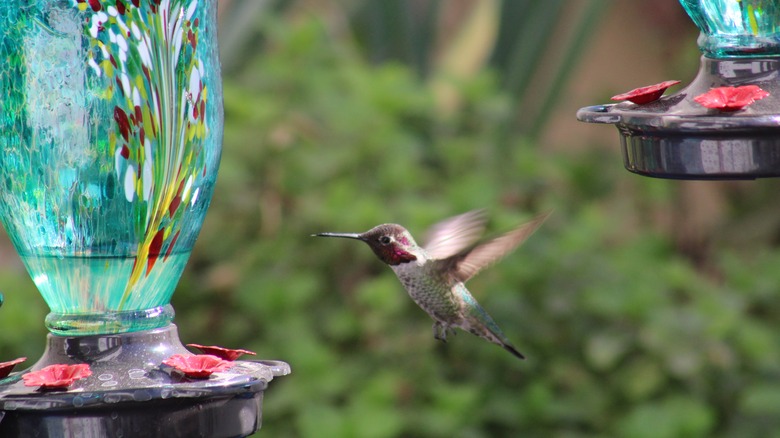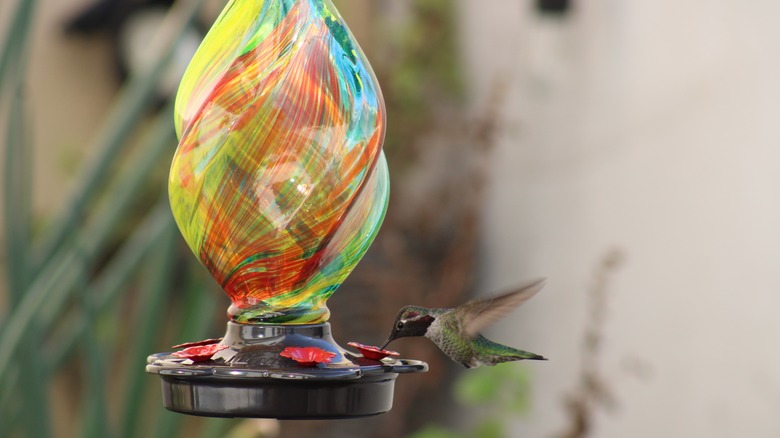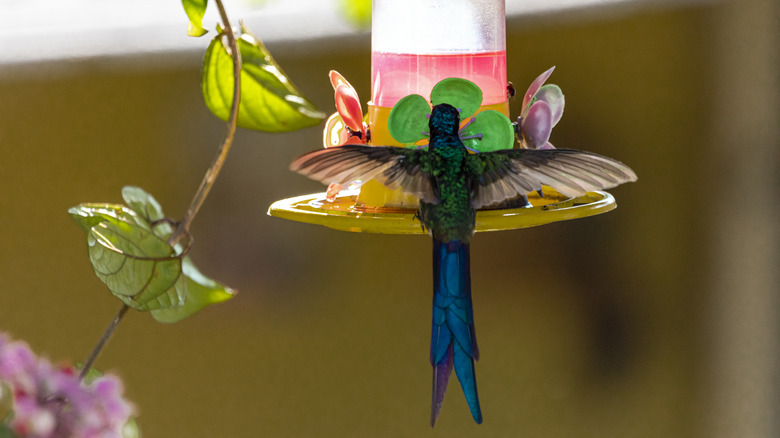Crucial Things To Consider Before Investing In Glass Hummingbird Feeders
A home with hummingbirds perched nearby and sipping nectar is a home we all want to live in. Adding a hummingbird feeder to your backyard, garden, or porch is an excellent way to attract these feathered friends and live a birdwatcher's dream. However, with all the different types of feeders on the market, it can be hard to select the perfect one. Glass is a popular material choice for the all-you-can-eat nectar buffet, but there are some pros and cons to weigh before you run out and purchase this option. While glass feeders are sturdy, easy to clean, and gorgeous, they can also be fragile, heavy, and more expensive than other types.
When trying to find the best type of hummingbird feeders for your yard, you want to consider the design, function, and cost of each of the options available. The material of the product factors into all three of these aspects, and there are feeders available in plastic, ceramic, and glass. While glass feeders can be a great option for an ornamental yet functional piece, they also have the potential to become a puddle of broken shards. Thinking about what you and your local hummers need will help you decide if glass feeders are worth the investment for you.
Glass hummingbird feeders are functional and stylish
Whether you turn an old mason jar into a budget-friendly hummingbird feeder or buy a glass option in store, this material can be a better alternative to other options for a few reasons. Primarily, the material is sturdy. Unless there are frequent hail storms or tornadoes in your area, the glass feeder should stand up to the elements. Its resistance to scratches, warping, and fading means the feeder can still look brand new even after years of service. Plus, unlike with plastic options, you don't have to fear any chemicals leaking into the nectar and harming hummingbirds. Glass also doesn't heat up as quickly as plastic, which is crucial because if left in the sun, the nectar can become too hot for the hummers and spoil faster.
The glass vessel is also easy to clean. In fact, some are even dishwasher-safe. If you routinely change out the nectar and wash the glass, it should always be crystal clear, allowing you to monitor the feed so you know if it's spoiled or if any ants got in. Further, because glass is non-porous, there aren't little nooks and crannies where bacteria could potentially build-up inside the vessel.
Finally, glass hummingbird diners are aesthetically-pleasing. There are various styles to fit your space, from antique-inspired to modern hand blown pieces. They often look more ornate and appealing than cheap plastic types. These feeders have looks and practicality, providing you with the best of both worlds.
Beware of broken glass and blown budgets
While there are lots of advantages to investing in glass hummingbird feeders, these types are not without their faults. For starters, while the material is durable and less prone to scratches, it is fragile. If your glass feeder topples over or drops from its hanging stand, you might end up with broken glass everywhere. That's no fun for you or the hummers. Plus, glass is more weighty than light plastic. After filling the container with nectar, the feeder can get heavy, and that extra weight isn't ideal for mounting feeders onto windows or dangling them from small branches. However, if you install your feeder securely and don't live in an area with extreme weather conditions, the feeder's weight and fragility shouldn't be a major issue.
Another thing to consider is the price. Glass feeders are generally slightly more expensive than plastic ones. While the cost difference between plastic and glass types typically isn't very significant for feeders with basic designs, this could add up if you're buying multiple feeders to attract more hummingbirds to your garden or if you choose a uniquely-designed feeder. However, the few extra dollars may be a good investment considering the benefits. It all depends on your budget and aesthetic, because as long as there's nectar in the feeder, the hummers most likely don't mind what material it's made out of.


